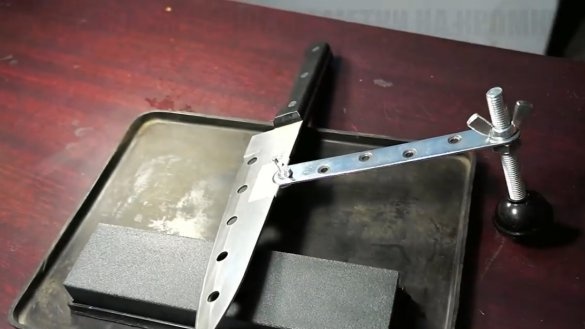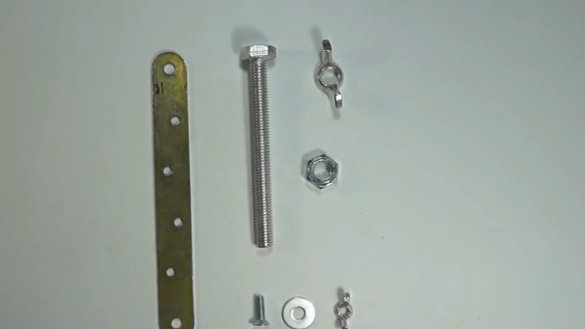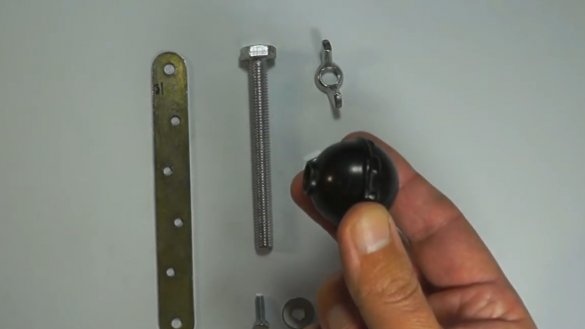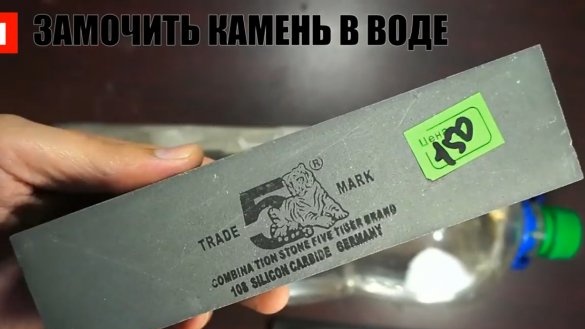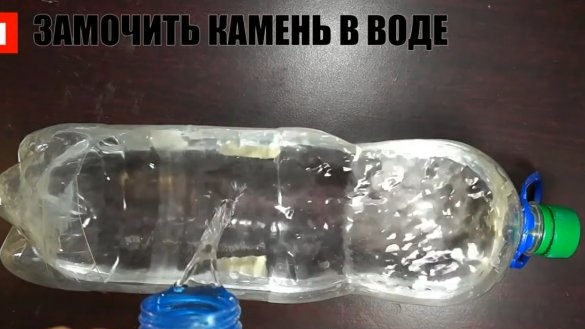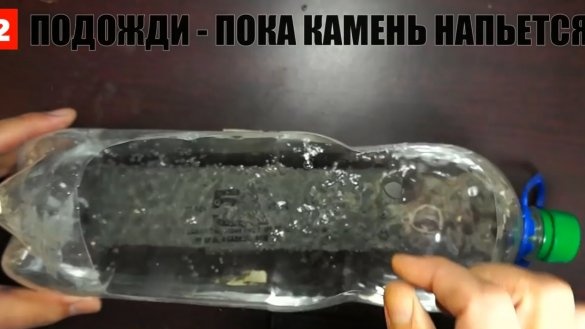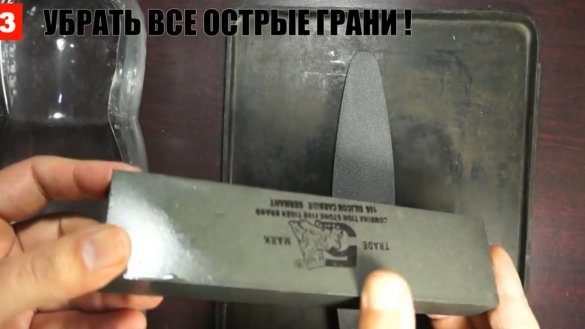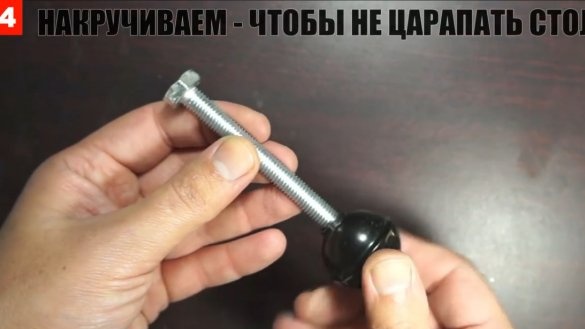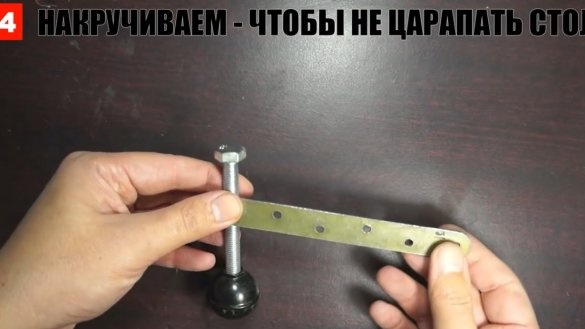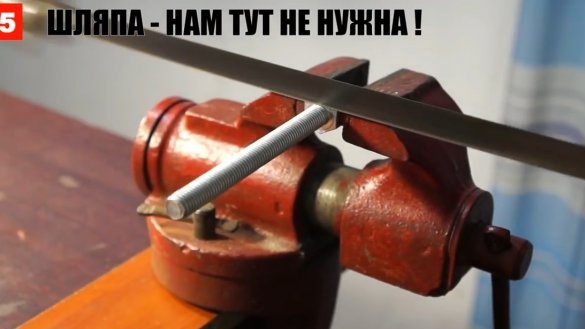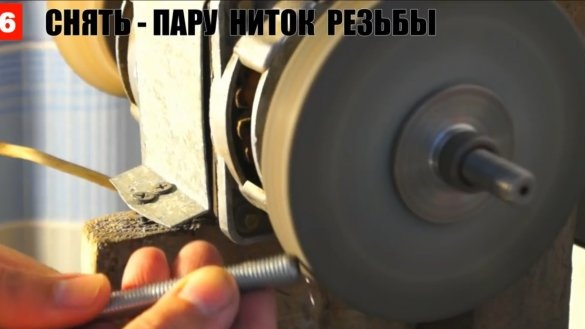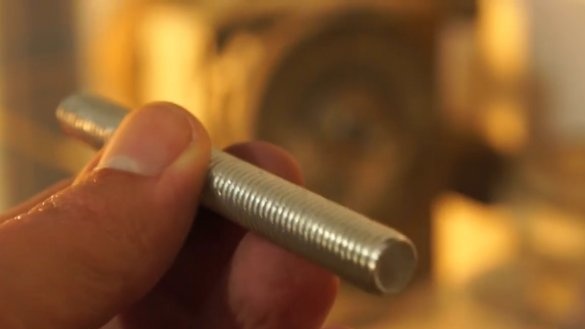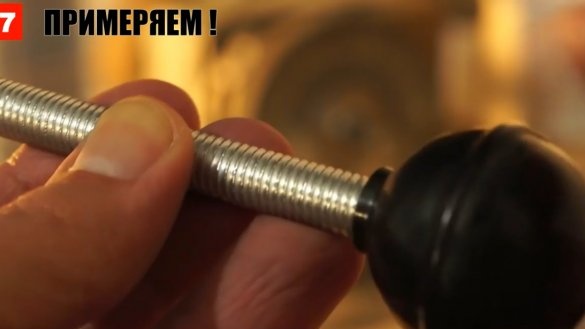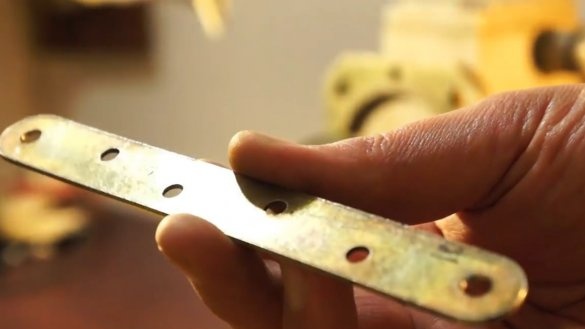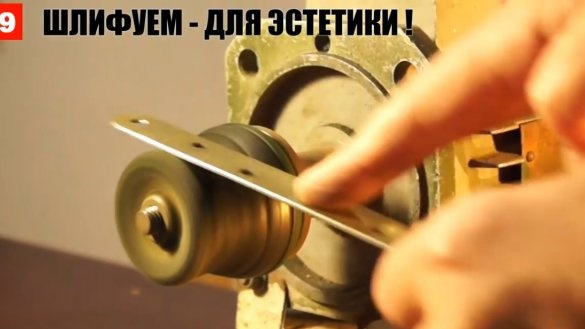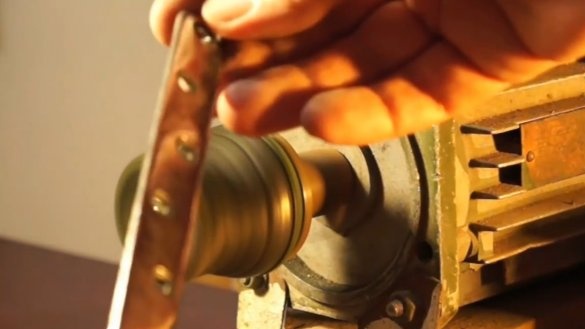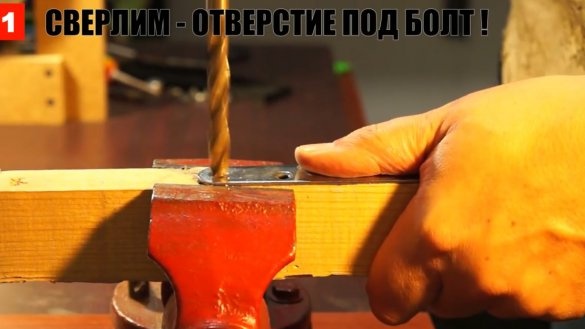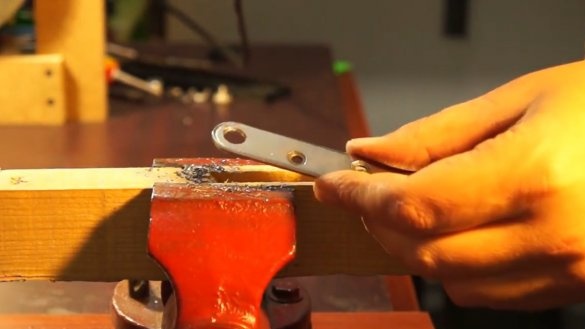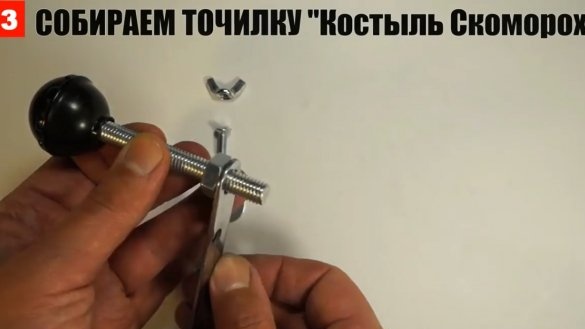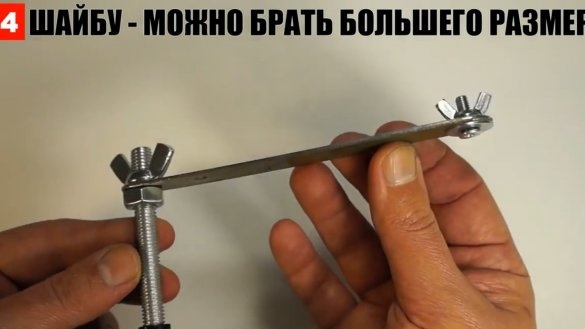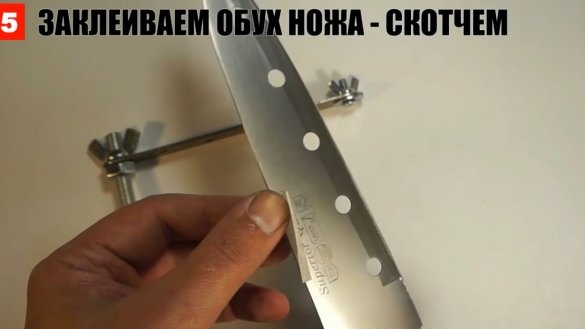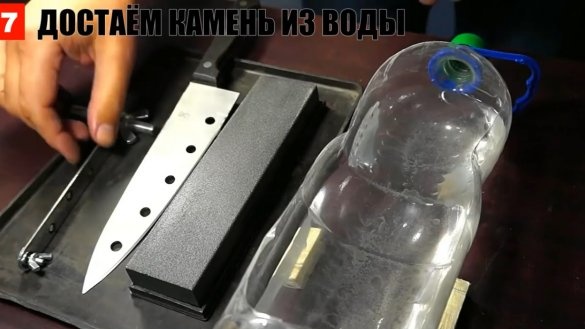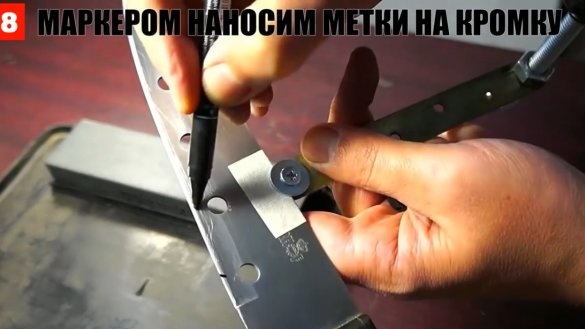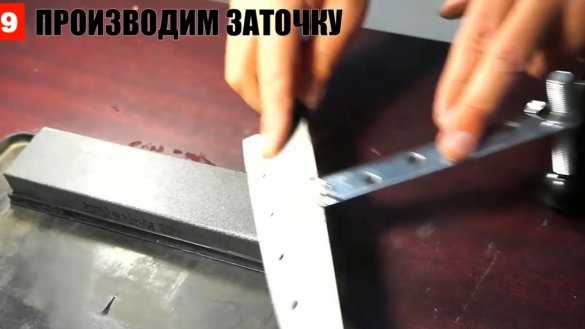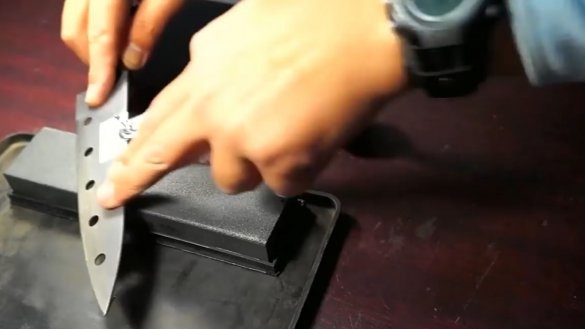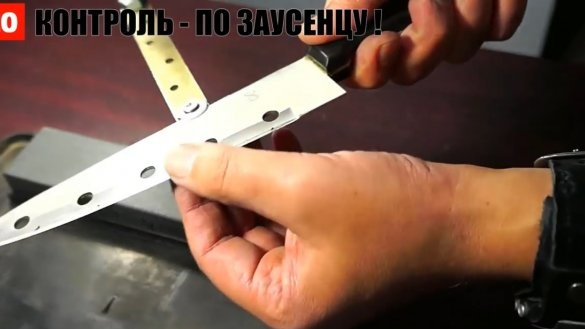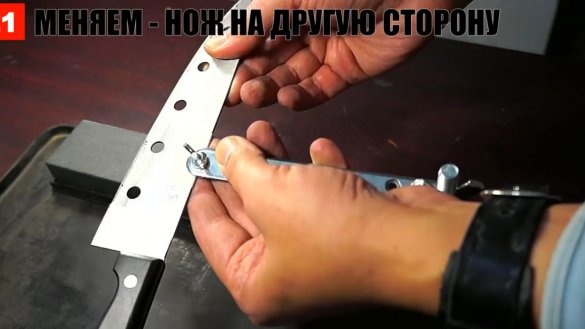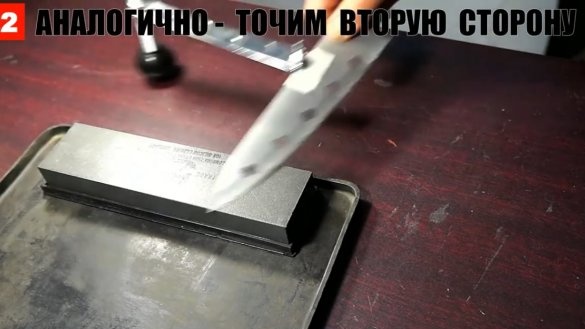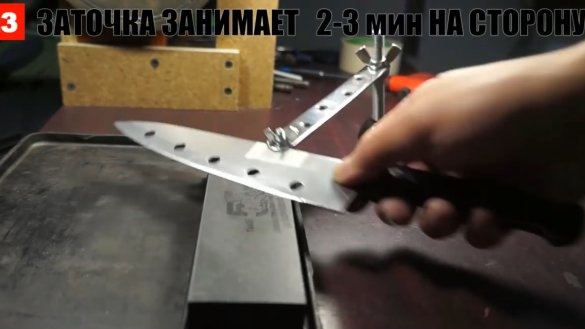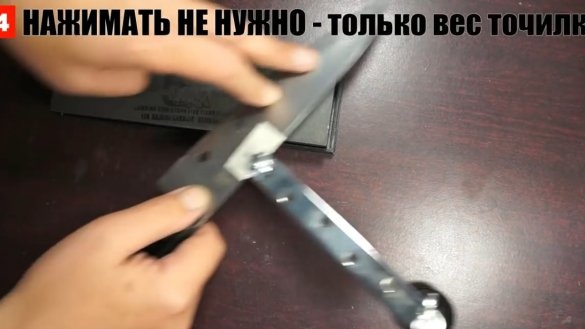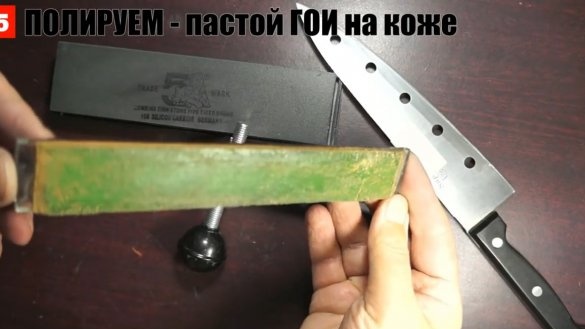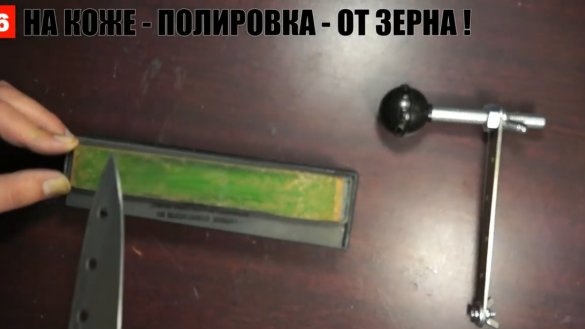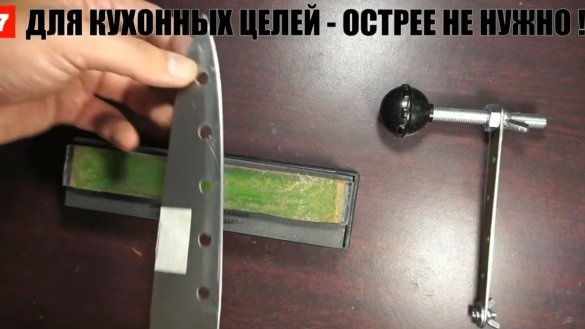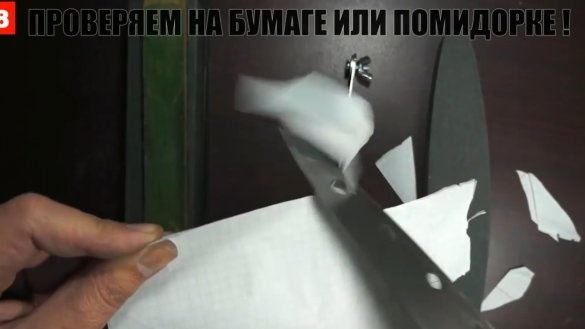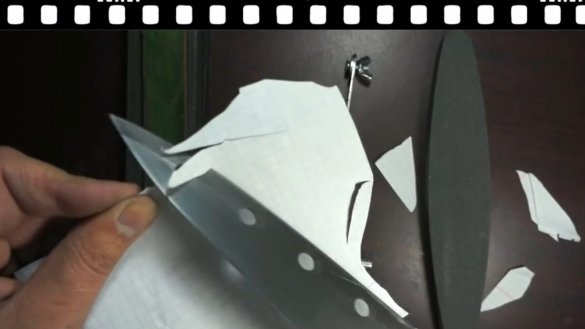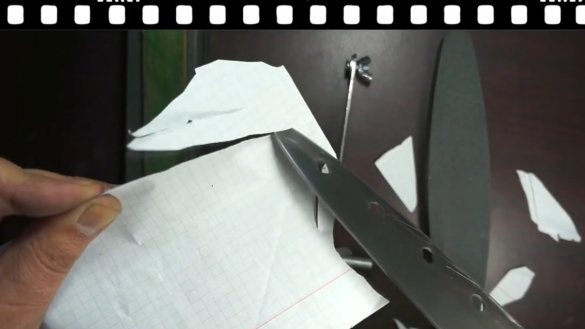Greetings the inhabitants of our site!
I present to your attention, probably the simplest knife sharpener, which you can do yourself literally in 15 minutes from a pair of bolts and a metal bar. But despite the simplicity of design, this sharpener works perfectly even with the cheapest and coarsest bars from the hardware store.
And now, together with the author of the YouTube channel “Your idea of TV”, let's get down to making a sharpener, which the author called “Crutch of a buffoon”.
In the household goods store, the author bought the 2 cheapest whetstones for sharpening.
This is a square two-layer and ordinary boat block. Remember, in hardware stores you have often seen similar and very cheap bars. And it is necessary to sharpen on such stones by soaking them in water so that the stones are not pickled with metal shavings.
It is also necessary to pre-round all sharp edges so as not to injure the edge of the knife about them.
And in order not to scratch the table during sharpening, we’ll use another Soviet plastic ball that was probably twisted by someone from an unnecessary machine at the factory.
Now let's cut off the head of the bolt, it will interfere with the wing nut, which in this sharpener is responsible for changing the angle of inclination of the cutting edge.
The cut must be aligned on the grinder by removing a couple of threads.
Since all the details of the sharpener are steel-colored, the author decided to polish the plate for aesthetics as well. The detail is small and polishing on the felt takes very little time, especially since the polished metal rusts less, and it is much more pleasant to the touch.
Now one of the holes will need to be drilled under the diameter of the bolt and remove the burrs. You can immediately take a plate with large holes, but in stores it is not so easy to find, at least the author did not succeed. Therefore, it is much easier and faster to drill a hole of the desired diameter yourself.
The very process of making a sharpener should also be fun, otherwise it will work poorly and your knives will remain dull (just kidding).Assembling a sharpener is no more complicated than a Kalashnikov assault rifle and you can assemble it for a while, even blindfolded.
If you have new knives, so as not to scratch the polish, cover the eyes with masking tape, and you can safely clamp the knife with a wing nut.
But be careful, ceramic knives cannot be clamped like that, they are fragile and can burst, and they need to be sharpened in a completely different way.
Thing done do it yourself, in the eyes of the author always seems to be a work of art and it’s very disappointing when there is no one to boast of. That's how people become bloggers. And now it's time to start sharpening. The stone was well saturated with water, so the author put a regular rubber mat from a car battery under it so that water would not splash around the table.
If the knife is new, in order to get to the factory sharpening angle, make marks with a marker and, if necessary, change the angle of inclination of the knife.
Sharpening with a “crutch of a buffoon” can be done both “for grain” and “from grain”. But the main rule is not to push hard. The bodyweight of the sharpener is quite enough for sharpening, and the fingers should lie freely on the knife and with little or no effort.
If you do everything correctly, then on each side you need to sharpen the knife only 1 time, and then turn the stone over to the smaller side.
Sharpening the most stupid knife takes the author of this homemade about a couple of minutes on one side. If it takes you more time, then you are clearly doing something wrong.
It is very useful to look at the cutting edge with good magnification during sharpening. If someone you know has a microscope, lend it for at least one day.
And the most famous and affordable polishing paste is, of course, GOI paste.
It is worth noting that in this sharpening, the author did not use small abrasive stones, and for kitchen knives he believes that this is not necessary.
Risks from rough stone work like a saw and such sharpening lasts a very long time on knives made of inexpensive steel. But for a sirloin knife, or just for your own pleasure, you can switch to thin stones or even diamonds.
You can familiarize yourself with the manufacturing process of this sharpener in more detail by looking at the original author video:
And that’s all. Thank you for attention. See you soon!

